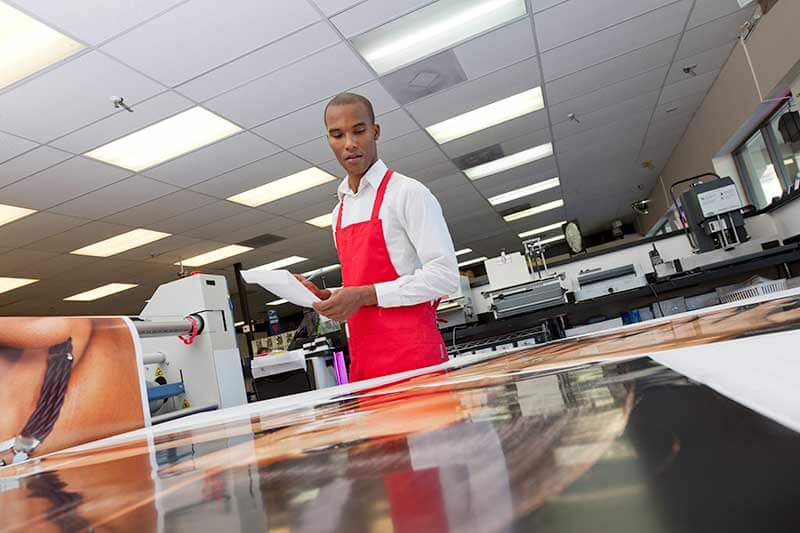Printers have come a long way in the last few decades, and some would think that the technology of digital printing has surpassed the traditional methods to an extent that other types of printing would become obsolete. Not so. Although digital printing has its uses, and certainly has a multitude of advantages, at times opting for the traditional methods of printing are more productive or cost-effective. If you often need to make changes to your printouts, a digital process would suit you well, as changes are easily and quickly accommodated. If, however, you’re looking to have a large number of prints done, it would be more cost-effective to go with a more traditional printing method. We’ll list a few advantages and disadvantages of digital printing below.
Large Format Digital Printing
Digital printing is quick, there’s no doubt about it. There’s no messing about with film plates or photo chemicals, as with other printing methods. In fact, there’s very little setup involved at all. This means that your order gets started much faster and the prints are in your hands days or even weeks before they would have been otherwise.
Digital printing takes the cake hands down when it comes to flawless, high-resolution images, and the images can be printed on a variety of products. Direct to substrate printing means that the images can be applied directly to (for example) wood, PVC, glass or Sintra board.
When it comes to consistency, you can’t argue that digital is a winner. It’s also much simpler to fix mistakes this way. There is no human error factor as in other printing methods, so you can expect a precise duplicate each and every time. Even large format printouts are no problem for a digital printer to replicate with precision.
If you need a prototype or small volume printed, digital also would be your better bet. Because this method is much faster to get started and can complete small orders quickly, the cost of labour and supplies is lower than with other methods.
There are, of course, a few downsides to the digital printing option.
Although you have access to an incredible colour palette with digital printing, this type of printer cannot handle metallic inks.
In direct sunlight, all inks will eventually fade, but digital inks do tend to fade faster than others. There is the option of a UV Inhibitor lamination, although many times the printed surface needs to be updated before the ink gets a chance to fade anyway.
Large volumes are more expensive with a digital printer. Because a traditional printer runs at between 300 and 500 feet per minute, they’re great at putting out large volumes fairly quickly. A digital printer, in comparison, runs at between 15 and 50 feet per minute.
Digital printers can have high upkeep costs compared to other printers. Although there is no setup, which definitely reduces labour costs associated with the job, the cost to keep the printer updated and fully operational definitely adds to a company’s overhead.
All credit goes to Lamin-8: Best Digital Printing in Toronto


Recent Comments